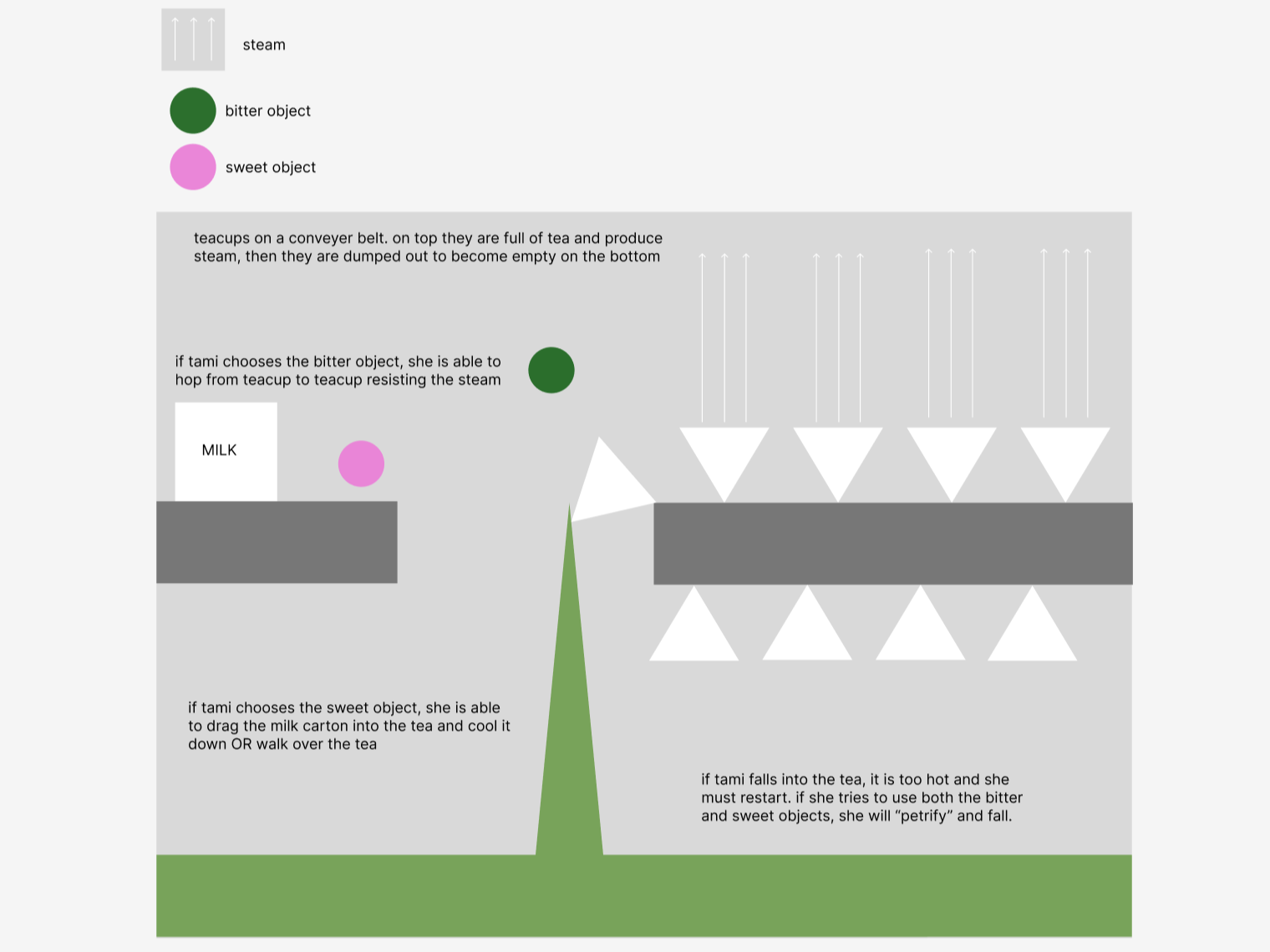Upcoming USC AGP
This upcoming project is a 2.5D action puzzle platformer where players control the tongue of an overworked chef who’s lost her sense of taste. As you journey through the chef’s body, you’ll rediscover her past passions and restore flavor to her life! Our goal is to create a sense of connection between taste, memory, and emotion by combining surreal visuals, tactile mechanics, and environmental storytelling.
Project Info
Tools: Unity 2D / 3D, Perforce, Figma
Team Size: 30+
Duration: May 2025 - present
Role: Game Designer
Co-designed and prototyped the game’s tongue-based movement mechanics, refining control feel and physics through iteration with the design team
Designed puzzle and platforming levels in Figma focused on flow, rhythm, and player comprehension, informed by narrative and gameplay pacing
Translated paper and Figma-based layout prototypes into greyboxed levels using Unity ProBuilder
Integrated and tested gameplay features in collaboration with engineering and art teams to ensure cohesion across game visuals, narrative, and mechanics
Developmental Process
This project follows a professional-style development pipeline across a full academic year, progressing through pre-production, production, alpha, beta, and final release stages. The team operates under an industry-standard structure, with a game director and dedicated leads for each discipline. Within this framework, I collaborate closely with the design lead, my coengineers, and artists to develop and refine gameplay systems, ensuring that level design, mechanics, and player experience evolve cohesively alongside the game’s technical and artistic goals.
Level Design Pipeline: Level creation workflow goes from initial sketches and paper layouts to Figma prototypes, then greyboxed and finalized in Unity. Emphasizes flow, challenge progression, and player readability at each stage
Iterative Design: Refine tongue mechanics, puzzles, and level layouts through ongoing playtests and mentor sessions. Each iteration focuses on improving movement feel, clarity, and player satisfaction based on feedback
Documents Used
Game Design Document (GDD): Outlines the game’s vision, mechanics, and systems design, including core tongue movement features, puzzle philosophy, and narrative themes centered on taste and creativity. Continuously updated throughout development to reflect playtest results and design refinements






